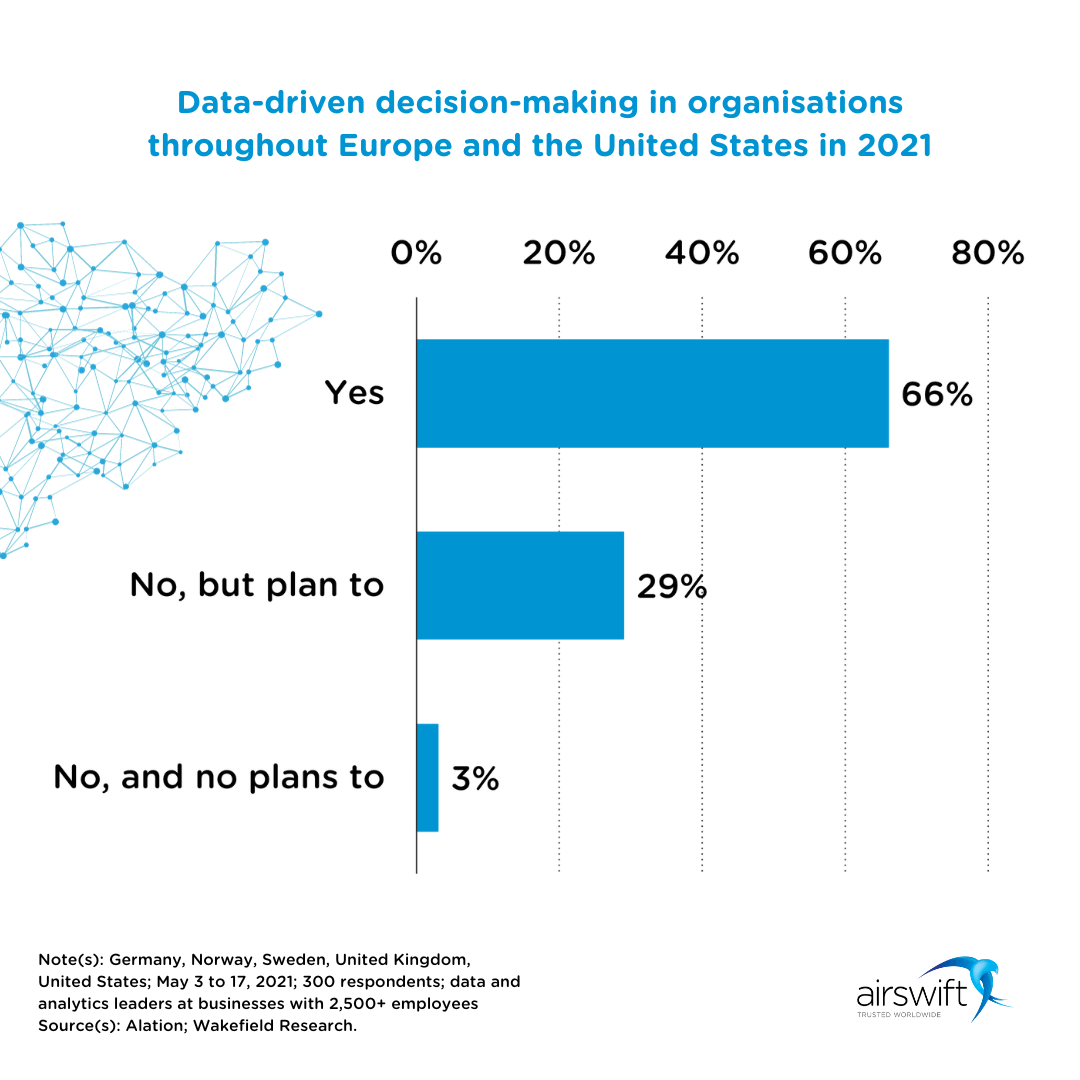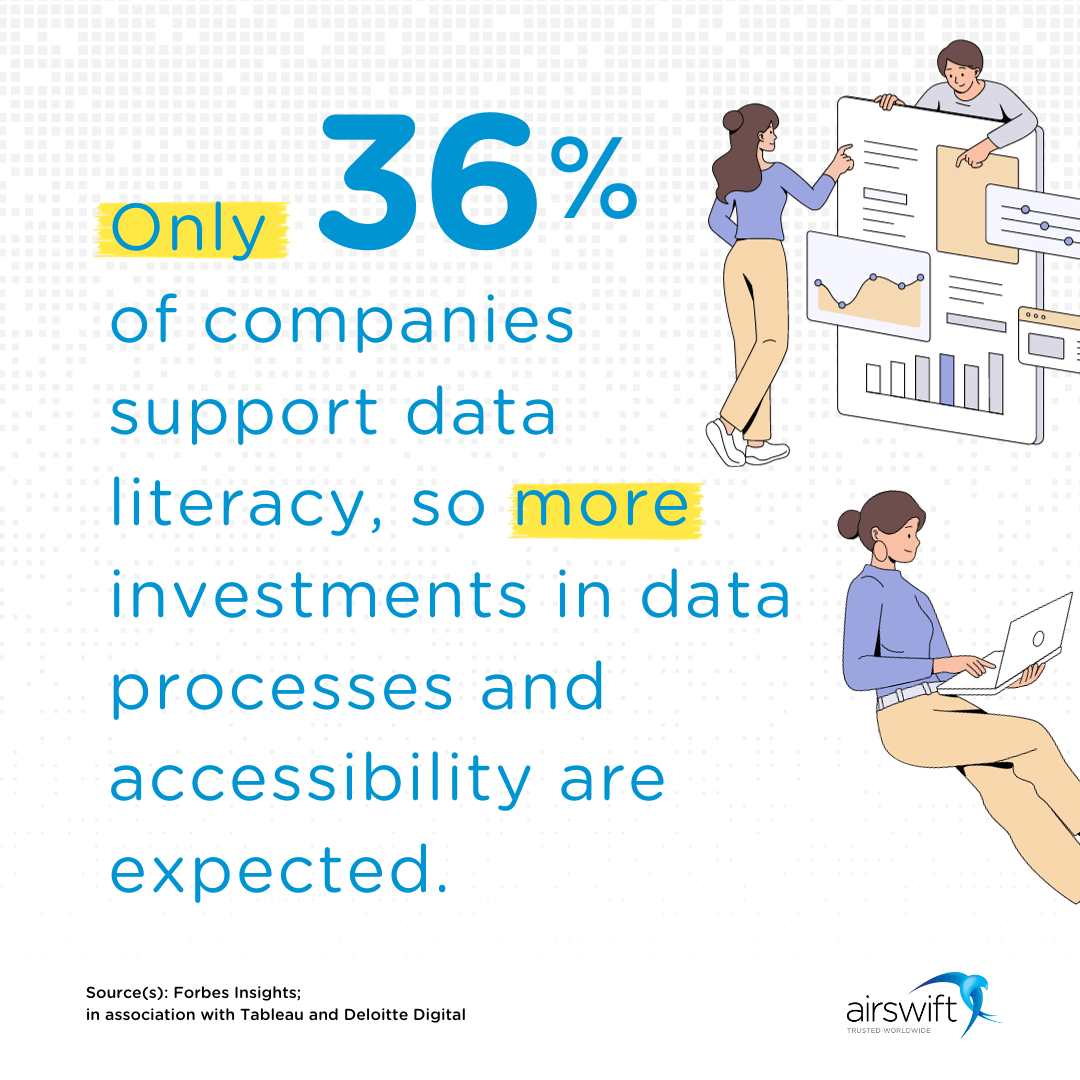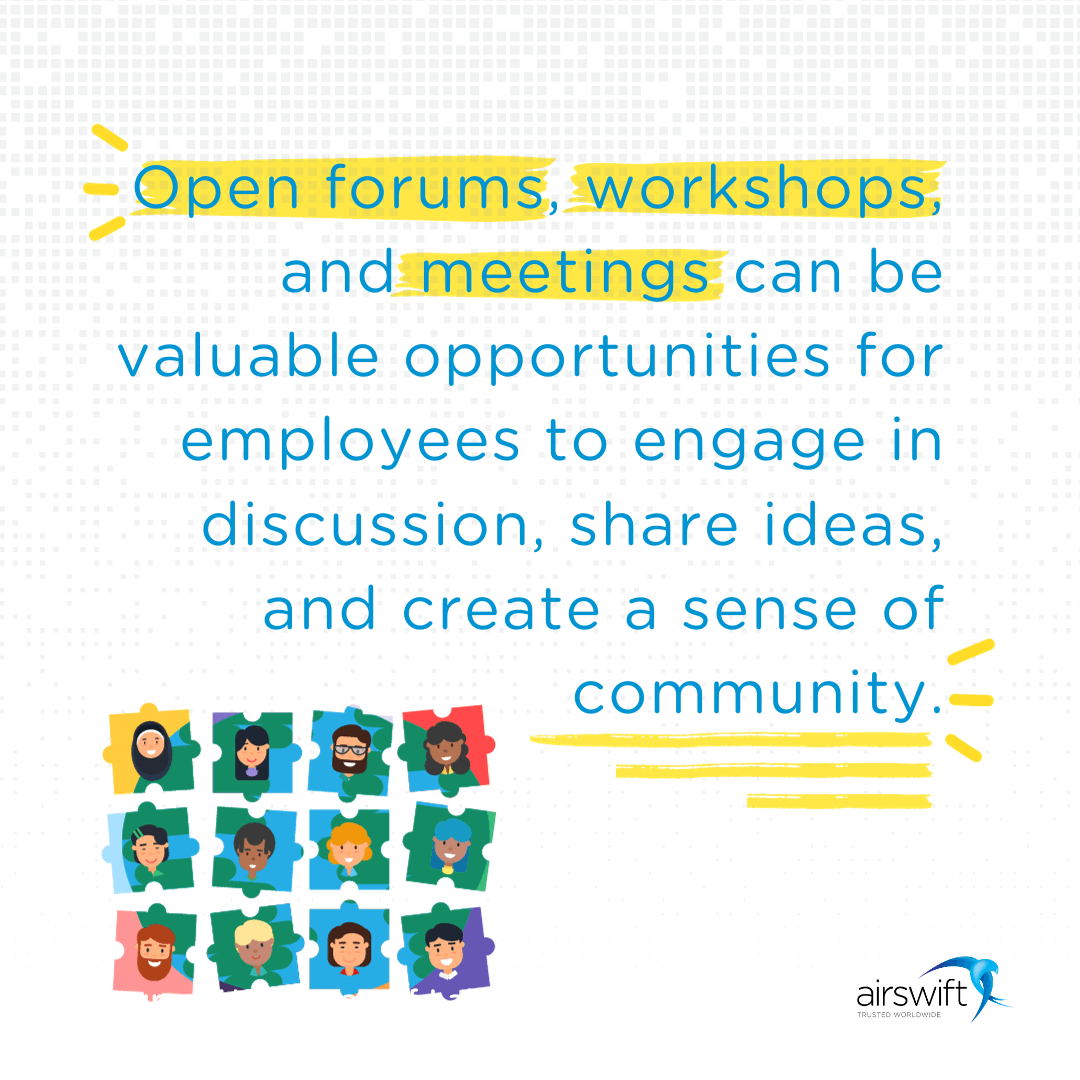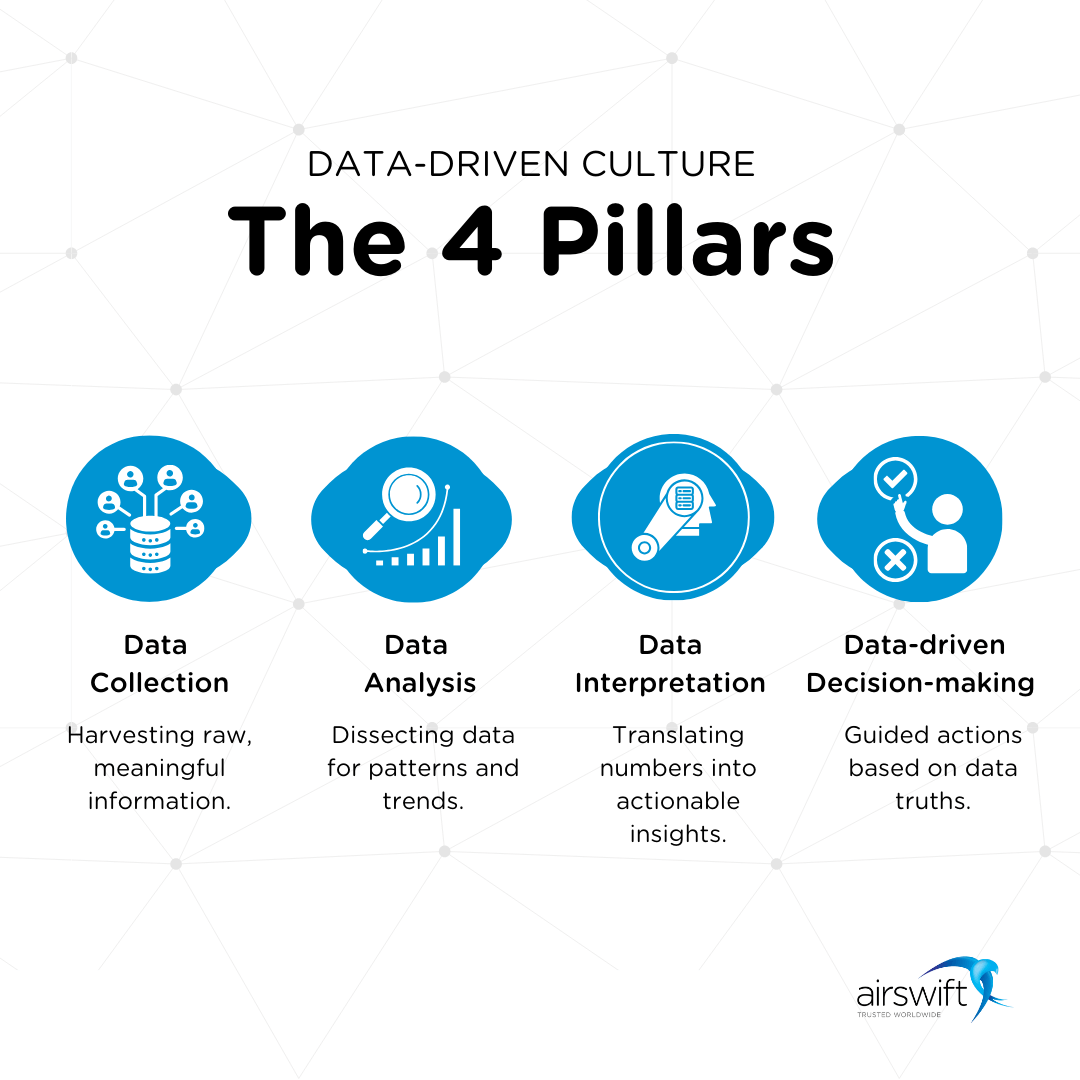
By
Raphael Santos
October 19, 2023
Updated
November 23, 2023
Source: Frame Stock Footage/Shutterstock
Establishing a Center of Excellence in data and addressing data bias are important strategies for promoting a data culture
In today's fast-paced digital era, data plays a vital role in running successful businesses. It helps organisations make informed decisions, develop insights-driven strategies, and provide personalised experiences to their customers.
Building a data culture within an organisation, therefore, is crucial to staying ahead in this competitive landscape. This culture helps to promote data-driven decision-making and insights, fosters innovation, and ultimately, impacts an organisation's long-term success.
However, instilling a data culture doesn't occur overnight. Organisations must be committed to fostering a mindset of data-driven decision-making and providing their employees with the right tools and resources to leverage data effectively.
According to a 2023 Forbes Insights report, 75% of respondents agreed that consistently using analytics for data-driven decisions leads to significant revenue gains.
In this article, we discuss three important points to consider when building a data-forward culture in your company.
Key takeaways
- Building a data culture is crucial to staying competitive and making informed decisions.
- Introducing data-driven strategies involves various strategic and operational steps.
- Organisations must provide the right tools and resources to foster a data-centric mindset.
- Impact on decision-making
- Role in digital transformation
- Elements of building a data culture
3.1 Technology and tools
3.2 Training and literacy
3.3 Leadership and coes
3.4 Collaboration and community - Creating a data-driven strategy
4.1 Understanding key metrics
4.2 Identifying business outcomes
4.3 Integrating data into business operations - Tackling challenges in building a data culture
5.1 Confronting data bias
5.2 Overcoming data silos - Implementing data governance
-
Monitoring and evaluating data culture
7.1 Evaluating with surveys7.2 Evaluating with dashboards7.3 Types of KPIs - In the end, these are the four pillars of a data-driven approach
Impact on decision-making
In a data-driven organisation, data is an integral part of the decision-making process. By using facts and figures, leaders can minimise the role of subjective opinions and biases.
This allows for more informed and accurate decisions that ultimately benefit the entire organisation. According to Wakefield Research, about two-thirds of European and US companies acknowledged having an initiative in place with the aim of becoming more data-driven.

Role in digital transformation
Data culture plays a crucial role in digital transformation. As industries transition to Industry 4.0, embracing data-driven strategies becomes essential.
For instance, digital transformation in manufacturing establishes the use of digitisation and datafication to overcome traditional issues with supply chain management.
Boosting a data culture is at the core of this transformation, enabling organisations to effectively harness data and unlock its value in driving innovation and efficiency.
Elements of building a data culture
Technology and tools
One crucial aspect of fostering a data-driven culture is having the right technology and tools. This entails investing in advanced solutions like artificial intelligence and machine learning to analyse data and derive valuable insights.
It is essential to provide access to user-friendly business intelligence tools as well as a robust data warehouse to store and handle large volumes of data.
Employees should also be equipped with collaboration tools that encourage teamwork and support diverse tech teams, driving innovation and meeting the needs of a broad customer base.
Training and literacy
Ensuring that all employees have the necessary training and literacy in data is crucial for building a data-driven culture. Staff should be offered relevant training and resources to develop their data literacy skills.
That includes understanding how to:
- Interpret data.
- Perform analyses.
- Make optimisation decisions based on the data presented.
Furthermore, fostering a data-driven culture not only promotes innovation within the organization but also enhances tech talent retention by providing competitive development opportunities.
According to the Forbes report, leaders recognise the importance of employee training in achieving data-driven collaboration goals. But, only 36% of companies provide enterprisewide data literacy support.

Leadership and CoEs
Leadership plays a significant role in creating a data-driven culture. Top executives, including chief data officers and chief digital officers, should set clear expectations for data-driven decision-making and foster a culture of curiosity and learning.
Also, establishing a data center of excellence (CoE) can aid in streamlining efforts and ensuring employees progress towards becoming proficient data analytics professionals.
This centralised repository of knowledge enables the consolidation of data services while still allowing different teams to customise their data analysis capabilities.
"A well-defined data strategy should articulate the organisation's vision, goals, and objectives related to data management and analytics. This strategy should be communicated across all departments and embraced by every team member."
Says our Regional Director, Kevin Kerr.
He also emphasises the importance of leadership as a vocation, and the need for employees to prioritise mastering analysis and business skills when pursuing this career path.
"Moving from an Individual Contributor to leadership is a very personal decision. Not touching the technology itself quickly becomes a brutal reality. You must come to grips that your technical skills will degrade, however you are now taking responsibility for other people.”
Collaboration and community
Lastly, cultivating a sense of collaboration and community is essential for creating a data-driven culture. Employees should be encouraged to share their insights and learnings from data analyses and collaborate on projects that utilise data to drive innovation.

When team members collaborate and work together, they can deliver better data analytics outcomes and drive the organisation forward with their combined knowledge and expertise.
Creating a data-driven strategy within an organisation
Understanding key metrics
A data-driven strategy begins with understanding the key metrics pertinent to your business. These provide insights into the performance of various aspects of your business and help guide decision-making.
For example, customer retention rates, revenue growth, and employee productivity can all be tracked using specific metrics. By regularly monitoring these KPIs, companies can make well-informed business decisions and adjust their strategies based on the data.
Identifying business outcomes
Identifying desired business outcomes is essential when creating a data-driven strategy. It allows companies to align their data and analytics efforts with their strategic goals, ensuring that the insights derived from the data will have a meaningful impact on their business operations.
This could include objectives such as:
- Increasing customer satisfaction.
- Reducing operational costs.
- Innovating new products or services.
With clearly defined business outcomes, organizations can strategically prioritize their data analysis and investments, honing in on the areas that are most likely to yield impactful results.
Developing a data-first culture can further support the achievement of these outcomes by emphasising the importance of utilising data in everyday decision-making processes.
Integrating data into business operations
Incorporating data and analytics into daily business operations is crucial to establish a data-driven culture. This requires organisations to move beyond merely collecting and storing data, but also applying the insights gained from the data analysis to improve various aspects of their business.
This integration can be achieved through various applications such as:
- Automating tasks.
- Developing new products or services based on data insights.
- Using data to refine existing processes.
Tackling challenges in building a data culture
Confronting data bias
Data bias can occur at multiple stages of the analytics process, including data collection, analysis, and interpretation. To ensure that insights are accurate and reliable, organisations must acknowledge the presence of biases and implement strategies to mitigate them.
These strategies may include:
- Adopting diverse data sources.
- Building diverse tech teams.
- Ensuring transparency in data processing, and performing regular audits to identify and correct any potential biases.
Overcoming data silos
Data silos occur when information is stored in separate systems or departments, restricting access and hindering collaboration. A lack of integration between these silos can limit the organisation's ability to generate valuable insights and utilise analytics effectively.
To overcome this, businesses should prioritise data integration, either through building a centralised data repository or implementing tools that promote collaboration and sharing.
By breaking down these barriers, organisations can foster their growth as a data-driven culture and optimise decision-making based on accurate and comprehensive information.
Implementing data governance
Data governance establishes a framework to manage and optimise the usage of data while ensuring data quality, security, and compliance with regulations.
The key to implementing data governance is to approach it systematically and deliberately while prioritising your organisation's goals and objectives.
First, define your data strategy and governance goals. Start by identifying the desired business outcomes and objectives, and consider short-term tactical goals as well as long-term strategic goals. Be aware that these goals may be influenced by external factors, such as legal regulations and industry-wide compliance.
Once the goals are set, establish a robust governance structure for your organisation. Typically, this structure includes three components:
- A central data management office (DMO), led by a chief data officer (CDO), with a targeted data strategy.
- Governance leaders who set the overall direction and standards.
- Governance roles organised by data domain for day-to-day work execution.
Next, focus on fostering a data-driven culture by following these five key steps:
- Study phase and sharing the vision: Analyse the current state of data usage, align on a shared vision, and evaluate the organisation's data maturity.
- Data Evangelisation: Promote data literacy and empower employees to use data in their daily work by providing proper data governance resources and support.
- Operational pain points and requirements identification: Assess the gaps and inefficiencies in data management practices and establish essential guidelines.
- Project implementation: Develop and execute data governance projects focused on addressing the identified needs.
- Change management & deployment: Continuously monitor the progress and adoption of data governance initiatives to ensure successful implementation and cultural adoption.
Finally, utilise a data governance framework and create an actionable roadmap. Determine the right level of data governance, whether enterprise-wide or iterative across departments, as this will vary based on the organisation's size and complexity. Craft a strategy that considers both the framework and actionable plans to enable the continuous improvement of data management practices.
By implementing a thoughtfully designed data governance program and promoting a data-driven culture, organisations can unlock the true potential of data and drive better decision-making, ultimately delivering more value to their stakeholders.
Monitoring and evaluating data culture
Evaluating with surveys
One effective way to evaluate data culture is by using surveys and dashboards. Surveys can provide valuable insights into employee attitudes, understanding, and use of data.
-
Data Literacy Surveys: Assess the level of data literacy across the organization to identify areas of improvement.
-
Data Usage Surveys: Gauge the extent to which employees are utilizing data in their daily tasks.
-
Data Satisfaction Surveys: Collect feedback on the ease of access, quality, and usefulness of the data provided.
-
Technology Adoption Surveys: Understand the adoption rate and satisfaction level with the data-related tools and technologies implemented.
Regularly gathering feedback through surveys allows organizations to pinpoint areas where employees may have gaps in their understanding of data and make necessary adjustments to their training programs.
Evaluating with dashboards
Dashboards, on the other hand, offer a visual representation of key metrics, helping organisations to track progress towards their data-driven goals.
-
Data Quality Dashboards: Monitor the quality of data in real-time to ensure accuracy and completeness.
-
Data Usage Dashboards: Track how often data is being accessed and used across different departments.
-
Performance Dashboards: Visualize key performance indicators to monitor the progress of data-driven initiatives.
-
Learning and Development Dashboards: Track the progress of training programs and the improvement in data literacy levels.
By monitoring these dashboards, companies can identify trends, monitor the adoption of data-driven practices, and ensure that decision-making processes are informed by accurate and relevant data.
Types of KPI's
In a data-driven culture, it is crucial to identify and track the right Key Performance Indicators (KPIs) to ensure that data analysis efforts are aligned with strategic objectives. These are the most used ones:
-
Data Accuracy Rate: Measure the percentage of accurate data entries to ensure high data quality.
-
Data Usage Rate: Track the frequency of data access and usage across the organization.
-
Data Literacy Improvement Rate: Monitor the improvement in data literacy levels over time.
-
Data-Driven Decision Rate: Measure the percentage of decisions made based on data versus intuition or gut feeling.
-
Data Sharing Rate: Track the frequency of data sharing and collaboration among teams.
-
Training Completion Rate: Monitor the percentage of employees who have completed data-related training programs.
-
Data Impact Metric: Assess the impact of data-driven initiatives on achieving business objectives, such as increased revenue, cost savings, or improved customer satisfaction.
In the end, these are the four pillars of a data-driven approach
The four pillars of a data-driven approach include:
- data collection
- data analysis
- data interpretation
- data-driven decision-making
These pillars work together to help organisations collect valuable information, analyse trends, draw meaningful insights, and use those insights to inform their decision-making process.

Discover top talent with Airswift’s data driven methodology
A good data culture has a significant impact on decision-making. It reduces biases, increases objectivity, and promotes informed choices. By making data-driven decisions, organisations can effectively allocate resources, respond to market changes, and position themselves for growth.
One good example is also how HR departments can benefit from using data-driven strategies to build a skilled workforce and strong corporate culture. We at Airswift can improve your recruitment processes through big data analytics.
We work with leading companies, recruiting and fosteringthe best talent. With 60+ offices worldwide, 9,000+ contractors, and 1000+ employees, we have the experience and reach to find professionals for your specific problem. Let us support your business and take it to new heights! Get in touch with us today to learn more about our services.

